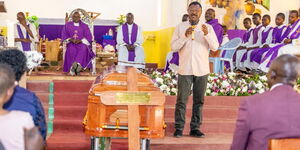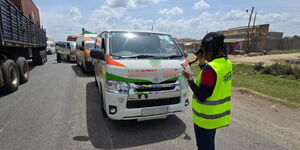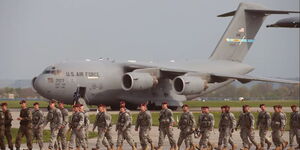The construction of the over Ksh327 billion Standard Gauge Railway (SGR) opened up the economies of many towns along the Mombasa - Nairobi line that had been dormant for years.
As part of President Uhuru Kenyatta's legacy project, the China Communications Construction Company (CCCC) in conjunction with the Kenya Railways, were tasked with developing substations that would be used by Kenyans as waiting or alighting bays.
This saw the construction of over 7 stations. Despite the iconic designs that have dominated the 480-km-long railway line, little is known of the inspiration behind the unique designs of the stations.
1. Emali Station
Located along the Nairobi - Mombasa SGR line, the station's unique design resembles that of a folded fist to represent unity.
The station is situated in Makueni county, majorly dominated by the Kamba community and has been growing since the official launch of the SGR in 2017.
The ever-growing activities in the town have seen it nicknamed the town that never sleeps.
2. Voi Station
This stations stands out because of the v-shaped structures that dominate the front side of the station.
KR stated that the station's design was inspired by the call for unity among Kenyans. The station serves both the SGR and Meter Gauge Railway and that played a part in the design.
The intersection of the V symbolises the merger and unity of two different units into one.
"The station’s design depicts the spirit of unity and harmony in line with the famous Kenyan moto ‘Harambee’ which means pulling together.
"It was a call for Kenyans to unite for a better future following Kenya’s independence. The station’s building is inspired by the letter V as seen on the front where part of the walls and roof assume a V-shape which stands above the rest of the building features," KR stated.
The V also represents the first letter of the area - Voi.
3. Kibwezi Station
The station's design was inspired by traditional architecture where communities used leaves and branches to provide shade during the day.
This is replicated in the design of the station's roof which resembles a folded leave with spaces providing shade and also allowing light to pass through.
4. Miasenyi Station
The Miasenyi station is famed for the white, brown and black colours which is inspired by the stripes of Zebras which are common in the area.
Located at the heart of Taru, the station has opened tourism opportunities in the area as Kenyans and international tourist flock the area to view the zebras and the landscape.
At the time of the construction, KR management estimated that the station would have an influx of over 119,000 people using it by 2025.
5. Mombasa Station
The design of the station located at the Indian ocean city was inspired by ripples - an effect caused when the wind hits the surface of water.
This informed the design which is made up of concentric circles and a central tower.
Additionally, the central tower was made part of the design as it is a replica of a lighthouse which is a common phenomenon in areas near the ocean across the world.
6. Suswa Station
Just like other stations that are inspired by Kenyan community traditions, this station's concept was informed by local traditional dancers.
Suswa station was abstracted from dancers in action as they hold their arms in the air.
The station also departs from other designs as it has the brick red colour at the top of the building to symbolise the soil and the use of bricks in the area.
7. Nairobi Station
The station based in the capital was conceptualised to mimic the Diesel Multiple Unit (DMU) trains which have a curved head similar to the Madaraka Express trains.
Additionally, the station also resembles two containers placed on top of each other - a representation of the containers used to transport cargo.
It is also one of the Kenya Railways main stations as it serves as the entry and exit point for most commuters using the SGR.












